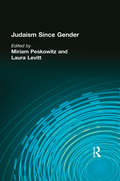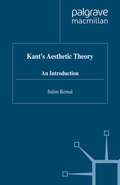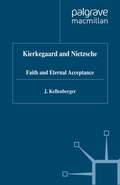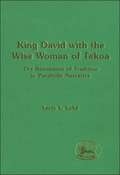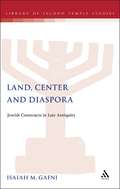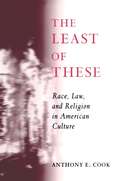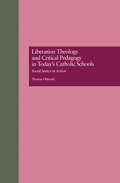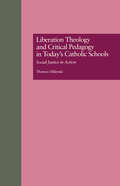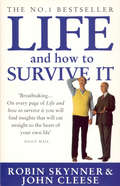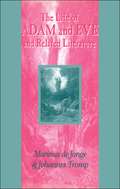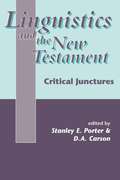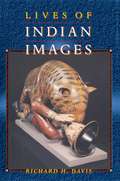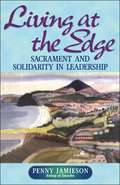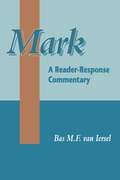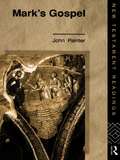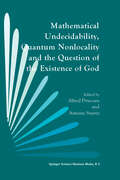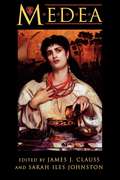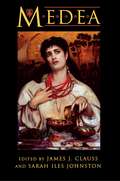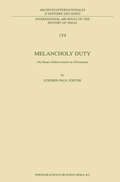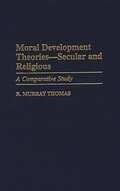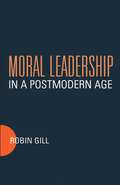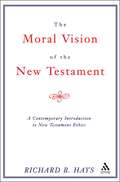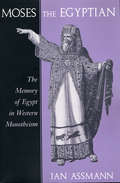- Table View
- List View
Judaism Since Gender
by Miriam Peskowitz Laura LevittJudaism Since Gender offers a radically new concept of Jewish Studies, staking out new intellectual terrain and redefining the discipline as an intrinsically feminist practice. The question of how knowledge is gendered has been discussed by philosophers and feminists for years, yet is still new to many scholars of Judaism. Judaism Since Gender illuminates a crucial debate among intellectuals both within and outside the academy, and ultimately overturns the belief that scholars of Judaism are still largely oblivious of recent developments in the study of gender. Offering a range of provocations--Jewish men as sissies, Jesus as transvestite, the problem of eroticizing Holocaust narratives--this timely collection pits the joys of transgression against desires for cultural wholeness.
Kant’s Aesthetic Theory: An Introduction
by S. KemalThis authoritative and accessible book explains the argument and strategy of Kant's analysis of beauty. A number of issues are discussed - amongst them the distinction and relation between natural beauty and fine art, pure and dependent beauty, disinterestedness and universality, form and expression, beauty and morality, transcendental and empirical necessity, individual and community. Links are also forged between Kant's theory and contemporary commentaries - including those by Donald Crawford, Jacques Derrida, Paul Guyer, Rudolph Makkreel, Mary McCloskey, Kenneth Rogerson and John Zammito.
Kierkegaard and Nietzsche: Faith and Eternal Acceptance (Library of Philosophy and Religion)
by J. KellenbergerThis book examines the thinking of two nineteenth-century existentialist thinkers, Soren Kierkegaard and Friedrich Nietzsche. Its focus is on the radically different ways they envisioned a joyful acceptance of life - a concern they shared. For Kierkegaard, in Fear and Trembling, joyful acceptance flows from the certitude of faith. For Nietzsche, in Thus Spoke Zarathustra, joyful acceptance is an acceptance of the eternal recurrence of life, and is ultimately a matter of will. This book explores the relationship between these opposed visions.
King David with the Wise Woman of Tekoa: The Resonance of Tradition in Parabolic Narrative (The Library of Hebrew Bible/Old Testament Studies)
by Larry LykeAssesses the multivocal quality of 2 Samuel 14 as a result of the many historical and social processes that formed the Hebrew Bible as a whole.
Land, Center and Diaspora: Jewish Constructs in Late Antiquity (The Library of Second Temple Studies #21)
by Isaiah GafniThe unique duality of Jewish existence, wherein a major Jewish centre in the Land of Israel flourished alongside a large and prosperous diaspora, was one of the outstanding features of Second Temple and post-Temple Jewish life. As in modern times, ongoing Jewish dispersion raised questions that went to the heart of Jewish self-identity, and declarations of allegiance to the ancestral homeland were frequently accompanied by seemingly contrary expressions of 'local-patriotism' on the part of Jewish diaspora communities. The destruction of Jerusalem and its Temple in 70 CE, and the subsequent failure under Bar-Kokhba to revive political independence (135 CE) forced Jews in Judaea as well as in the diaspora to re-evaluate the nature of the bonds that linked Jews throughout the world to 'The Land', and at the same time effected a re-examination of the authority structure that claimed priority for the communal leaders still functioning in Jewish Palestine. The chapters of this book, first delivered in Oxford as the Third Jacobs Lectures in Rabbinic Thought in January 1994, address a broad spectrum of questions relating to the centre-diaspora reality of Jewish life in Late Antiquity.
The Least of These: Race, Law, and Religion in American Culture
by Anthony E. CookFirst published in 1997. Routledge is an imprint of Taylor & Francis, an informa company.
The Least of These: Race, Law, and Religion in American Culture
by Anthony E. CookFirst published in 1997. Routledge is an imprint of Taylor & Francis, an informa company.
Liberation Theology and Critical Pedagogy in Today's Catholic Schools: Social Justice in Action (Critical Education Practice)
by Thomas OldenskiGrounded in the work of liberation theologians, this book considers peace, love and social justice within a democratic curriculum and underscores the importance of integrating critical discourses with Catholic education.
Liberation Theology and Critical Pedagogy in Today's Catholic Schools: Social Justice in Action (Critical Education Practice #Vol. 11)
by Thomas OldenskiGrounded in the work of liberation theologians, this book considers peace, love and social justice within a democratic curriculum and underscores the importance of integrating critical discourses with Catholic education.
Life And How To Survive It
by John Cleese Dr Robin SkynnerBrilliantly entertaining, enlightening and inspiring, Robin Skynner and John Cleese take on the big issue: life, and the challenge of living, in all its myriad forms. This book is an essential guide to surviving life's ups and downs - at home or in the workplace, as a member of a family or society. Presented in the same lively style as the best-selling Families and How to Survive Them, Life extends Skynner's and Cleese's study beyond the family to relationships and group interaction in life outside it. The book deals with such pithy issues as: -Why life gives you all the lessons you need-How grief can be good for you-Why work is essential to our psychological health-What mid-life crisis means for youWe are all searching for healthier, happier, more satisfying lives, but it's the journey that matters, not the destination. Skynner and Cleese are the perfect travelling companions.
Life of Adam and Eve and Related Literature (Guides to the Apocrypha and Pseudepigrapha)
by Marinus De Jonge Johannes TrompThe Life of Adam and Eve once belonged to the most popular literature in the Christian world. Retelling the Genesis 3 story, it gives an elaborate description of Adam's death and his assumption to Paradise in the third heaven. His continued existence, as well as his future resurrection, are as much a paradigm for humanity as his transgression, condemnation and death. For a long time attention was focused on the Greek and Latin versions only. More recently, editions of Georgian and Armenian versions have become available, occupying a middle position between the Greek and the Latin. This new material now makes it necessary to sort out the relationships between no less than five clearly related but in many respects different documents. Taken together they present a complex but interesting mosaic of reflections on the human plight, inspired by the Genesis story.
Linguistics and the New Testament: Critical Junctures (The Library of New Testament Studies #168)
by Stanley E. Porter D. A. CarsonThis volume continues the major work published by the JSNT Supplement Series in the area of Greek linguistics of the New Testament, and explores what the editors believe are crucial phases in the application of linguistics to New Testament Greek. The first half of the volume includes essays on such topics as linguistics and literary criticism, linguistics and historical criticism, and linguistics and rhetoric. The second half includes essays dealing with the relations and uses of individual words, but ranges from oral composition to the value of word frequency in determining authorship. Some of these essays review established models of research; others propose new models and criteria of linguistic analysis.
Lives of Indian Images
by Richard H. DavisFor many centuries, Hindus have taken it for granted that the religious images they place in temples and home shrines for purposes of worship are alive. Hindu priests bring them to life through a complex ritual "establishment" that invokes the god or goddess into material support. Priests and devotees then maintain the enlivened image as a divine person through ongoing liturgical activity: they must awaken it in the morning, bathe it, dress it, feed it, entertain it, praise it, and eventually put it to bed at night. In this linked series of case studies of Hindu religious objects, Richard Davis argues that in some sense these believers are correct: through ongoing interactions with humans, religious objects are brought to life.Davis draws largely on reader-response literary theory and anthropological approaches to the study of objects in society in order to trace the biographies of Indian religious images over many centuries. He shows that Hindu priests and worshipers are not the only ones to enliven images. Bringing with them differing religious assumptions, political agendas, and economic motivations, others may animate the very same objects as icons of sovereignty, as polytheistic "idols," as "devils," as potentially lucrative commodities, as objects of sculptural art, or as symbols for a whole range of new meanings never foreseen by the images' makers or original worshipers.
Living at the Edge: Sacrament and Solidarity in Leadership
by Penny JamiesonAs the first woman in the Anglican Communion to become a diocesan bishop, she brought to her diocese an experience of beng an outsider, a woman in a hierarchical church in which women were second class citizens. In this, her first book, she asks how outsiders who win power may exercise that power without making others outsiders.
Mark: A Reader-Response Commentary (The Library of New Testament Studies #164)
by Bas M. van IerselThe distinguished Dutch New Testament scholar Bas van Iersel offers us an incisive and comprehensive episode-by-episode commentary on the Gospel of Mark. His special focus is on the contribution of each episode to the overall meaning of the gospel, at both the level of the story and the level of the discourse. As a reader-response commentator, his concern is everywhere with the effect of Mark's story on its readers, engaging both with the situation of the original audience of Mark-Christians of Gentile origin in Rome shortly after the Neronian persecutions-and with that of the present-day reader. Even the introductions are reader-related: on the role of the reader, the original audience and the reader of today, the overall concentric structure of Mark, and the relation of Mark to the Old Testament.
Mark's Gospel
by John PainterMark's 'biography' of Jesus is the earliest of the four gospels, and influenced them all. The distinctive feature of this biography is the quality of 'good news', which presupposes a world dominated by the forces of evil.John Painter shows how the rhetorical and dramatic shaping of the book emphasises the conflict of good and evil at many levels - between Jesus and the Jewish authorities, Jesus and the Roman authorities, and the conflict of values within the disciples themselves. These matters of content are integral to this original approach to Mark's theodicy, while the stylistic issue raises the question of Mark's intended readership.John Painter's succinct yet thorough treatment of Mark's gospel opens up not only these rhetorical issues, but the social context of the gospel, which Painter argues to be that of the Pauline mission to the nations.
Mark's Gospel
by John PainterMark's 'biography' of Jesus is the earliest of the four gospels, and influenced them all. The distinctive feature of this biography is the quality of 'good news', which presupposes a world dominated by the forces of evil.John Painter shows how the rhetorical and dramatic shaping of the book emphasises the conflict of good and evil at many levels - between Jesus and the Jewish authorities, Jesus and the Roman authorities, and the conflict of values within the disciples themselves. These matters of content are integral to this original approach to Mark's theodicy, while the stylistic issue raises the question of Mark's intended readership.John Painter's succinct yet thorough treatment of Mark's gospel opens up not only these rhetorical issues, but the social context of the gospel, which Painter argues to be that of the Pauline mission to the nations.
Mathematical Undecidability, Quantum Nonlocality and the Question of the Existence of God
by A. Driessen Antoine SuarezOn January 22, 1990, the late John Bell held at CERN (European Laboratory for Particle Physics), Geneva a seminar organized by the Center of Quantum Philosophy, that at this time was an association of scientists interested in the interpretation of quantum mechanics. In this seminar Bell presented once again his famous theorem. Thereafter a discussion took place in which not only physical but also highly speculative epistemological and philosophical questions were vividly debated. The list of topics included: assumption of free will in Bell's theorem, the understanding of mind, the relationship between the mathematical and the physical world, the existence of unobservable causes and the limits of human knowledge in mathematics and physics. Encouraged by this stimulating discussion some of the participants decided to found an Institute for Interdisciplinary Studies (lIS) to promote philosoph ical and interdisciplinary reflection on the advances of science. Meanwhile the lIS has associated its activities with the Swiss foundation, Fondation du Leman, and the Dutch foundation, Stichting Instudo, registered in Geneva and Amsterdam, respectively. With its activities the lIS intends to strengthen the unity between the professional activities in science and the reflection on fun damental philosophical questions. In addition the interdisciplinary approach is expected to give a contribution to the progress of science and the socio economic development. At present three working groups are active within the lIS, i. e. : - the Center for Quantum Philosophy, - the Wealth Creation and Sustainable Development Group, - the Neural Science Group.
Medea: Essays on Medea in Myth, Literature, Philosophy, and Art
by James J. Clauss Sarah Iles JohnstonFrom the dawn of European literature, the figure of Medea--best known as the helpmate of Jason and murderer of her own children--has inspired artists in all fields throughout all centuries. Euripides, Seneca, Corneille, Delacroix, Anouilh, Pasolini, Maria Callas, Martha Graham, Samuel Barber, and Diana Rigg are among the many who have given Medea life on stage, film, and canvas, through music and dance, from ancient Greek drama to Broadway. In seeking to understand the powerful hold Medea has had on our imaginations for nearly three millennia, a group of renowned scholars here examines the major representations of Medea in myth, art, and ancient and contemporary literature, as well as the philosophical, psychological, and cultural questions these portrayals raise. The result is a comprehensive and nuanced look at one of the most captivating mythic figures of all time. Unlike most mythic figures, whose attributes remain constant throughout mythology, Medea is continually changing in the wide variety of stories that circulated during antiquity. She appears as enchantress, helper-maiden, infanticide, fratricide, kidnapper, founder of cities, and foreigner. Not only does Medea's checkered career illuminate the opposing concepts of self and other, it also suggests the disturbing possibility of otherness within self. In addition to the editors, the contributors include Fritz Graf, Nita Krevans, Jan Bremmer, Dolores M. O'Higgins, Deborah Boedeker, Carole E. Newlands, John M. Dillon, Martha C. Nussbaum, Christiane Sourvinou-Inwood, and Marianne McDonald.
Medea: Essays on Medea in Myth, Literature, Philosophy, and Art
by Sarah Iles Johnston James J. ClaussFrom the dawn of European literature, the figure of Medea--best known as the helpmate of Jason and murderer of her own children--has inspired artists in all fields throughout all centuries. Euripides, Seneca, Corneille, Delacroix, Anouilh, Pasolini, Maria Callas, Martha Graham, Samuel Barber, and Diana Rigg are among the many who have given Medea life on stage, film, and canvas, through music and dance, from ancient Greek drama to Broadway. In seeking to understand the powerful hold Medea has had on our imaginations for nearly three millennia, a group of renowned scholars here examines the major representations of Medea in myth, art, and ancient and contemporary literature, as well as the philosophical, psychological, and cultural questions these portrayals raise. The result is a comprehensive and nuanced look at one of the most captivating mythic figures of all time. Unlike most mythic figures, whose attributes remain constant throughout mythology, Medea is continually changing in the wide variety of stories that circulated during antiquity. She appears as enchantress, helper-maiden, infanticide, fratricide, kidnapper, founder of cities, and foreigner. Not only does Medea's checkered career illuminate the opposing concepts of self and other, it also suggests the disturbing possibility of otherness within self. In addition to the editors, the contributors include Fritz Graf, Nita Krevans, Jan Bremmer, Dolores M. O'Higgins, Deborah Boedeker, Carole E. Newlands, John M. Dillon, Martha C. Nussbaum, Christiane Sourvinou-Inwood, and Marianne McDonald.
Melancholy Duty: The Hume-Gibbon Attack on Christianity (International Archives of the History of Ideas Archives internationales d'histoire des idées #154)
by S.P. FosterThis book studies the complementary features of the thought of David Hume and Edward Gibbon in the complete range of its confrontation with eighteenth-century Christianity. The ten chapters explore the iconoclasm of these two philosophical historians - Hume as the premier philosopher, Gibbon as the consummate historian - as they labored to `naturalize' the study of Christianity, particularly with attention to its social and political dimensions. No other work deals as comprehensively or thoroughly with the attempt of philosophical history's challenge to Christianity. Belief in miracles and the afterlife, the dimensions of fanaticism and superstition, and the nature of religious persecution were the themes that occupied Hume and Gibbon in the making of their critique of Christianity. This book makes a valuable contribution to scholarship in a number of fields including the history of ideas, religious studies, and philosophy. It will be of interest to philosophers of religion, historians of ideas, eighteenth-century intellectual historians, scholars of the Scottish Enlightenment, and Hume and Gibbon scholars.
Moral Development Theories -- Secular and Religious: A Comparative Study (Contributions to the Study of Education)
by R. Murray ThomasMoral Development Theories—Secular and Religious introduces readers to 13 secular models and 13d religious theories in a wide-ranging comparative study of the roots of moral development. The secular models include attribution theory, cognitive-structural views, social-learning and social-cognition approaches, Freud's psychoanalysis (plus Erikson and Fromm), Marxist beliefs, a composite theory, Hoffman's conception of empathy, Anderson's information-integration view, Gilligan's gender distinction, Sutherland and Cressey's explanation of delinquency, and Lovinger on ego development. Religious theories represent the Judaic-Christian-Islamic line, Hinduism and derivatives (Buddhism, Jainism, Sikhism), Confucianism, Shinto, and four minor theories drawn from the belief systems of the Navajo, Zulus, Vodou adherents, and Okinawans.The description of each theory is designed to answer a common set of questions introduced in Chapter 1. The closing section of each chapter evaluates that chapter's theories in terms of a series of assessment standards described in Chapter 2. The book's final chapter inspects all of the theories from the viewpoint of five desires that people often hold in relation to their conceptions of moral development. The desires are: (a) for immanent justice; (b) to understand the causes of the consequences that result from people's behavior in moral situations; (c) to become immortal; (d) to enjoy a happy life, and (e) to understand the moral-development process in order to help others who need moral guidance.
Moral Leadership in a Postmodern Age
by Robin GillRobin Gill examines the issues that connect faith and moral leadership in an increasingly fragmented and relativistic world.
Moral Vision of the New Testament: A Contemporary Introduction To New Testament Ethics
by Richard HaysRichard Hays explores the ethical values and dynamics with which Jesus himself lived to show how the New Testament provides challenging moral guidance on some of the most important contemporary ethical issues.
Moses the Egyptian: The Memory Of Egypt In Western Monotheism
by Jan Assmann"Standing at the very foundation of monotheism, and so of Western culture, Moses is a figure not of history, but of memory. As such, he is the quintessential subject for the innovative historiography Jan Assmann both defines and practices in this work, the study of historical memory—a study, in this case, of the ways in which factual and fictional events and characters are stored in religious beliefs and transformed in their philosophical justification, literary reinterpretation, philological restitution (or falsification), and psychoanalytic demystification. To account for the complexities of the foundational event through which monotheism was established, Moses the Egyptian goes back to the short-lived monotheistic revolution of the Egyptian king Akhenaten (1360–1340 B.C.E.). Assmann traces the monotheism of Moses to this source, then shows how his followers denied the Egyptians any part in the origin of their beliefs and condemned them as polytheistic idolaters. Thus began the cycle in which every “counter-religion,” by establishing itself as truth, denounced all others as false. Assmann reconstructs this cycle as a pattern of historical abuse, and tracks its permutations from ancient sources, including the Bible, through Renaissance debates over the basis of religion to Sigmund Freud’s Moses and Monotheism. One of the great Egyptologists of our time, and an exceptional scholar of history and literature, Assmann is uniquely equipped for this undertaking—an exemplary case study of the vicissitudes of historical memory that is also a compelling lesson in the fluidity of cultural identity and beliefs."
